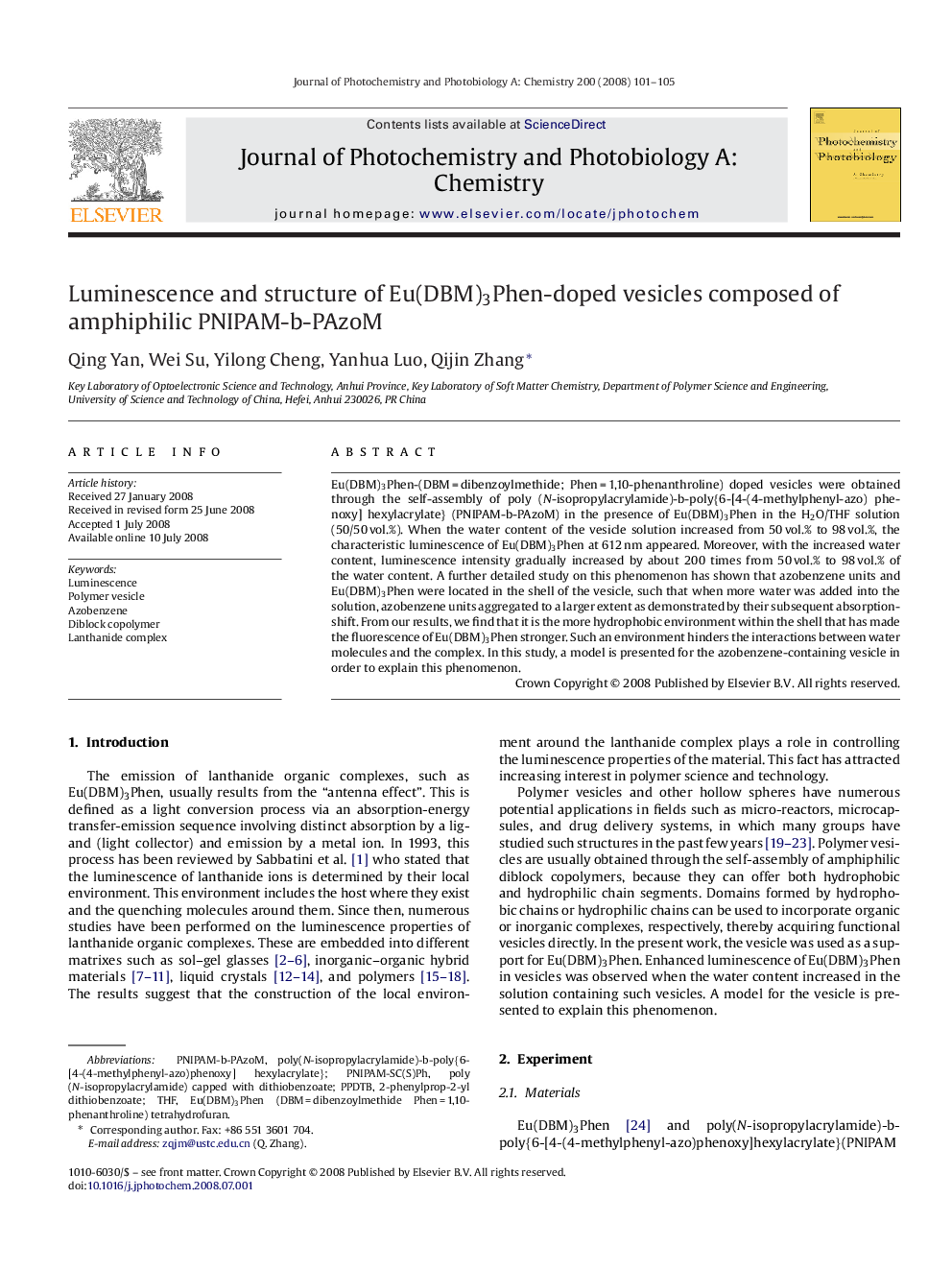| کد مقاله | کد نشریه | سال انتشار | مقاله انگلیسی | نسخه تمام متن |
|---|---|---|---|---|
| 28976 | 44112 | 2008 | 5 صفحه PDF | دانلود رایگان |

Eu(DBM)3Phen-(DBM = dibenzoylmethide; Phen = 1,10-phenanthroline) doped vesicles were obtained through the self-assembly of poly (N-isopropylacrylamide)-b-poly{6-[4-(4-methylphenyl-azo) phenoxy] hexylacrylate} (PNIPAM-b-PAzoM) in the presence of Eu(DBM)3Phen in the H2O/THF solution (50/50 vol.%). When the water content of the vesicle solution increased from 50 vol.% to 98 vol.%, the characteristic luminescence of Eu(DBM)3Phen at 612 nm appeared. Moreover, with the increased water content, luminescence intensity gradually increased by about 200 times from 50 vol.% to 98 vol.% of the water content. A further detailed study on this phenomenon has shown that azobenzene units and Eu(DBM)3Phen were located in the shell of the vesicle, such that when more water was added into the solution, azobenzene units aggregated to a larger extent as demonstrated by their subsequent absorption-shift. From our results, we find that it is the more hydrophobic environment within the shell that has made the fluorescence of Eu(DBM)3Phen stronger. Such an environment hinders the interactions between water molecules and the complex. In this study, a model is presented for the azobenzene-containing vesicle in order to explain this phenomenon.
Journal: Journal of Photochemistry and Photobiology A: Chemistry - Volume 200, Issues 2–3, 15 December 2008, Pages 101–105